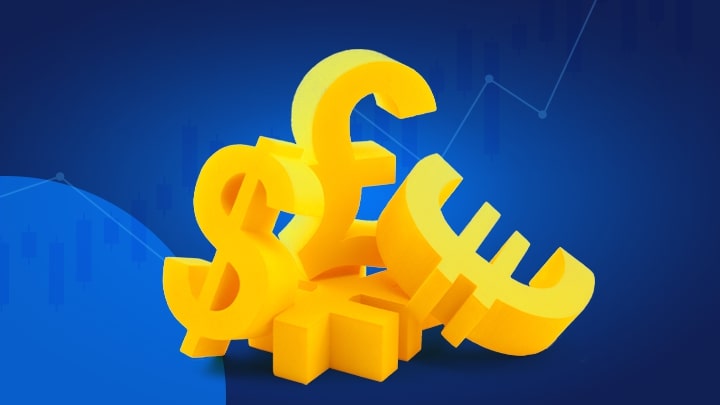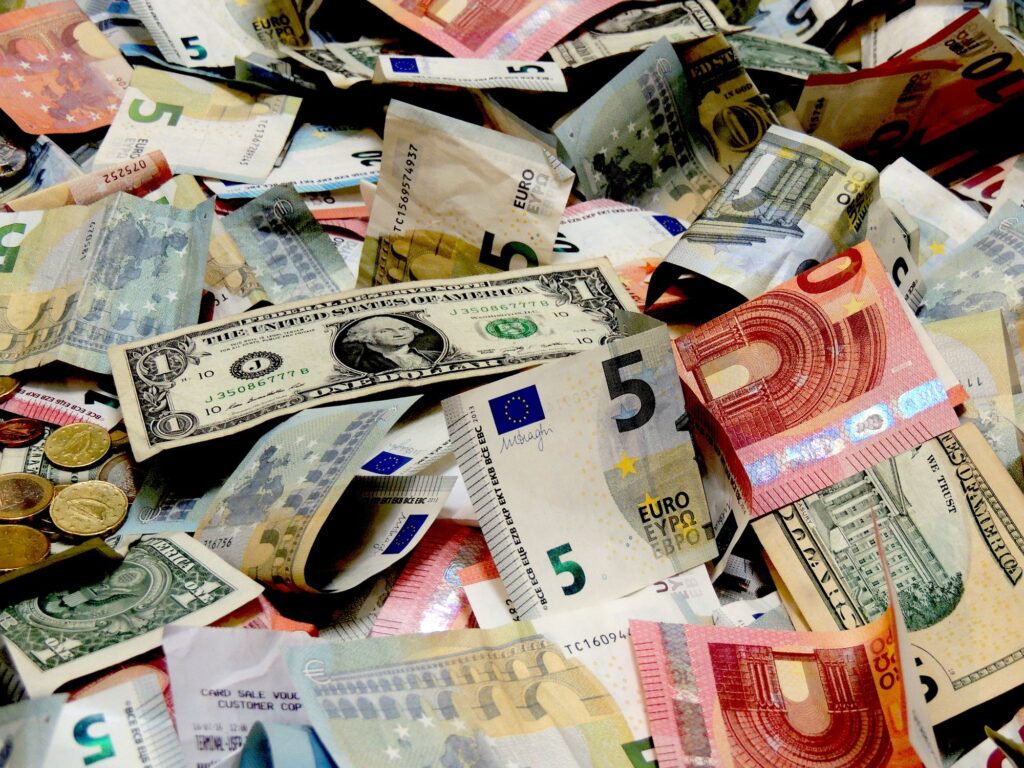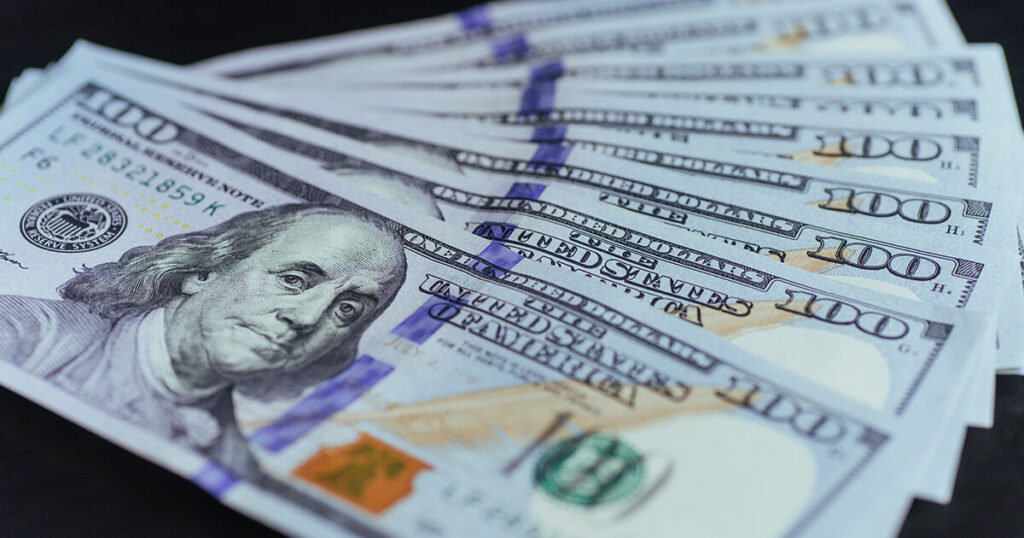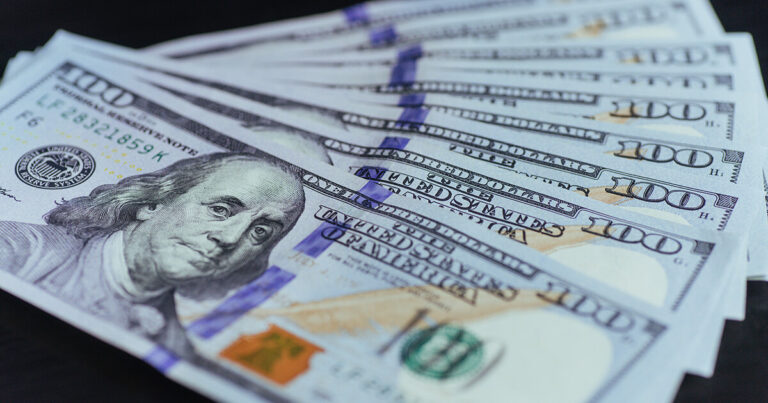
While it has been a roller coaster ride, new currency news shows US dollar took the top spot this week, gaining 1.42 percent. Australian and New Zealand dollars followed closely, while Euro settled at the bottom.
Rate hikes, upbeat economic data, and commodity prices surge uplifted US dollar and risk assets. But despite a hawkish ECB, Euro closed worse because of the Ukraine crisis.
Fundamentals

Ukraine crisis and inflation predominantly drove the forex market, driving commodity-linked assets higher.
International Politics
Japan, EU, US, and UK blocked Russian banks from SWIFT. The Swiss government broke its traditional neutral stance in international politics to impose economic sanctions on Russia.
Meanwhile, Russia continues to pound Ukraine. As a result, four million people have fled to other countries, and six million internally displaced. On Friday, Russia bombed Ukraine’s Zaporizhzhia nuclear power plant. The attack sparked global fears of a nuclear catastrophe.
Economy
The Ukraine crisis drove commodities to new highs as traders shunned Russian products. The situation also interfered with the supply chain of goods, forcing countries to scramble for few available resources.
Economic Review and Performance of G7 Currencies
Table: g7 currencies performance summary
| Currency pair | 2nd April 2022 | 8th April 2022 | Average price | Percentage change | Remarks |
| USD | 98.974 | 99.753 | 99.506 | 1.142 | increase |
| GBPUSD | 1.3113 | 1.3031 | 1.3071 | -0.6178 | drop |
| EURUSD | 1.0970 | 1.0876 | 1.0904 | -1.6014 | drop |
| USDCHF | 0.9262 | 0.9346 | 0.9315 | 0.9942 | increase |
| USDJPY | 122.78 | 124.32 | 123.68 | 1.49 | increase |
| USDCAD | 1.2486 | 1.2568 | 1.2534 | 0.3994 | increase |
| AUDUSD | 0.7542 | 0.7455 | 0.7514 | -0.5867 | drop |
| NZDUSD | 0.6945 | 0.6844 | 0.6910 | -1.2125 | drop |
USD Eyes 100 Handle Level
The US dollar moved closer to the 100 handle level, gaining 1.18 percent to 99.796. Earlier in the week, service sector activity rose to 58.3 from 56.5, while factory orders declined by half a percent.
Mid-week FOMC meeting minutes uplifted the dollar. The fed showed it would hike rates by up to half percent and reduce its balance sheet by ninety-five billion dollars per month. The fed’s meeting also boosted treasury yields.
New currency news shows US 10-year treasury yield gained 2.713 percent, the highest since March 2019. On Thursday, jobless claims shrunk by five thousand to 166 thousand.
Sterling Pound On Free Fall
Sterling pound continues to plummet. It tumbled by 0.68 percent to 1.3025 following a previous 0.52 percent drop. Uncertainty in the Ukraine crisis and scarce economic updates weighed on sterling pound’s performance.
Construction index remained unchanged at 59.1. Financial experts had projected a drop to 57.8. Private sector performance supported UK’s currency. The services activity index shot to 62.6 from 60.5, beating a prelim estimation of 61.0.
The improved private sector performance pushed the composite index to 60.9 from 59.9. Approval of mortgages for house buying surged to seventy-four thousand in January.
Euro, Back to the Red
The Euro lost 1.50 percent to 1.0877 after rallying by 0.55 percent in the previous week. G7 forex market was busy, driven largely by Germany’s economy and service sector activity.
Germany posted mixed economic data. Germany’s industrial production rose by 0.2 percent while factory orders slumped by 2.2 percent. Nevertheless, trade surplus expanded to 11.5 billion euros from 8.9 billion euros, providing much-needed support for the Euro.
Service sector provided additional support to the Euro. The service sector across the eurozone was upbeat, rising to 55.6 from 55.5. But manufacturing data disappointed, lowering the composite index to 54.9 from 55.5.
ECB monetary policy meeting minutes dominated new currency news on Thursday. As expected, policymakers discussed plans to reduce stimulus activities to tame the escalating inflation.
While acknowledging the need for inflation measures, the policymakers warned the Ukraine crisis would continue to impact the global economy.
Swiss Franc
Reports in new currency news show Swiss franc lost 0.9942 percent. Swiss retail sales improved by 4.8 percent. KOF, Switzerland’s economic barometer, drops to 105.04 from 107.21.
Switzerland broke its traditional neutral political position and imposed sanctions on Russia. Switzerland’s monthly consumer price index rose to 2.2 percent against a 1.8 percent projection.
Canadian Dollar, Down Yet Again
Canadian dollar continues to weaken, losing 0.40 percent following a 0.36% drop. Earlier in the week, production and trade surplus data uplifted the loonie. Canada’s trade surplus rose to 2.66 billion Canadian dollars from C$2.62bn as the production index moved to 74.2 from 60,6.
Though positive, employment data weighed on Lonnie. Canada netted 72.5 thousand new jobs following a 336 thousand jump in the previous month. The slight gain in employment numbers lowered unemployment rate from 5.5 percent to 5.3 percent.
According to the Bank of Canada (BOC) business outlook survey, businesses are extremely concerned about inflation.
Asia Pacific New Currency News

It was a bearish week for the g7 currencies.
Australian Dollar, Top Performer
Australian dollar lost 0.51 percent to 0.745 against the dollar. Australia posted sparse economic data, which still disappointed the Aussie dollar. Australia’s trade surplus shrunk to 7.457 billion Australian dollars from 12.89 billion Australian dollars in February.
While the economic data supported the Euro, RBA monetary policy $ forward guidance weighed the Australian dollar.
New Zealand Dollar
According to new currency news, Kiwi Dollar slid 1.13% to 0.6849 against the greenback. New Zealand posted no economic data, leaving kiwi dollar performance to monetary policies and poor economic data from China.
Japanese Yen, Another Weekly Loss
The Japanese yen lost 1.49 percent to be the week’s top loser. It had lost 0.39 percent in the previous week.Japan posted weak consumer spending figures, which weighed heavily on its currency. It’’s household spending slid by nearly three percent following a 1.2 percent previous drop.
Week Ahead
Amidst the Ukraine crisis, we expect the following fundamentals to impact g7 market in the coming week:
- ECB, RBNZ, and BOC will discuss rate hikes
- US, UK, and China will release inflation data
- French presidential election first round on Sunday
Will the greenback cross the 100 level handle?
Don’t miss the upcoming new currency news, for this and more.





